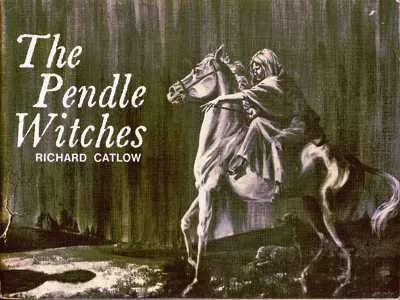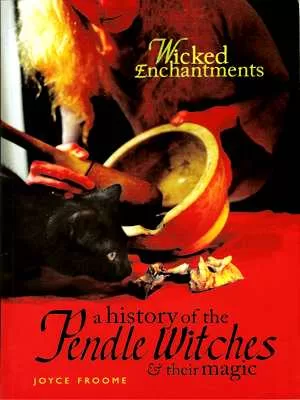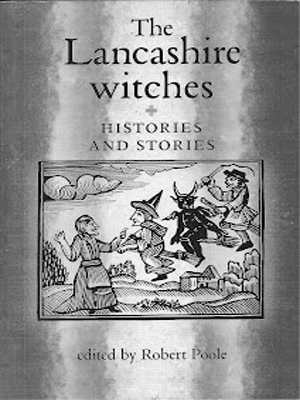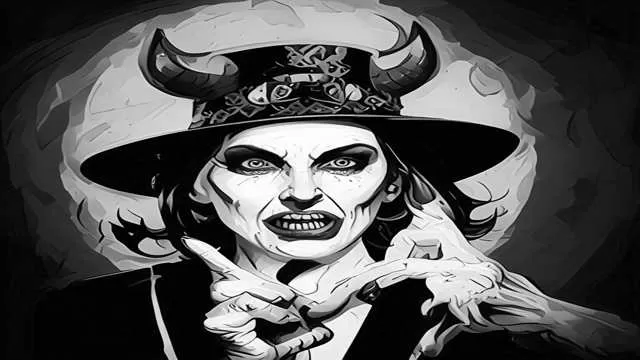The haunting tales of the Lancashire witches have captivated historians and enthusiasts alike for centuries. At the heart of this dark chapter in English history lies The Wonderfull Discoverie of Witches in the County of Lancaster (1613) by Thomas Potts, which serves as the primary source for understanding the infamous trials.
However, the narrative of witchcraft in Lancashire extends beyond Potts, weaving through various accounts and interpretations that reflect the societal fears and beliefs of the time.
The Trials and Their Sources
Potts’ work is crucial for anyone delving into the witch trials, as it provides a detailed account of the events surrounding the 1612 trials. Yet, the story does not end there. A second outbreak of witchcraft occurred in 1633, documented by Dr. John Webster in his book The Displaying of Supposed Witchcraft (1677). Unlike Potts, Webster’s work is not a historical account but rather a theological examination questioning the very existence of witches. His perspective adds a layer of complexity to the understanding of witchcraft during this tumultuous period.

The comprehensive study by Dr. Thomas Dunham Whitaker, titled History of the Original Parish of Whalley and Honour of Clitheroe (1801), also references Webster’s findings. However, it is striking that Whitaker makes no mention of the 1612 trials, a curious omission for an antiquarian of his caliber. As noted in the revised 4th edition (1872-6) edited by J.G. Nichols and P.A. Lyons, it is perplexing that Whitaker, who had a keen interest in local superstitions, seemed unaware of Potts’s significant work or the trials themselves.
A Rich Tapestry of Literature
The historical narrative of the Lancashire witches is further enriched by Edward Baines, who provided an extensive account of the trials in his History of the County Palatine and Duchy of Lancaster (1836), citing Potts as his source. However, aside from fictional works and general folklore, dedicated literature on the Lancashire witches is sparse. One notable exception is G.B. Harrison’s The Trial of the Lancaster Witches (1929), which largely reprints Potts’s original text.
In 1957, Walter Bennett produced a brief pamphlet titled The Pendle Witches for the Burnley Libraries and Arts Committee. While it serves as an interesting introduction, it contains minor inaccuracies and can be read in under an hour.

For those seeking a more comprehensive examination, Edgar Peel and Pat Southern’s The Trials of the Lancashire Witches (1969) offers a chronological study of the events, placing the trials within the broader context of 17th-century society. Although somewhat dated, it remains a solid starting point for newcomers to the subject.
Notable Works and Perspectives
Several other works have contributed to the understanding of the Lancashire witches. Richard Catlow’s The Pendle Witches (1976) is based on articles from the Burnley Express and features captivating photographs of the Pendle district, though it may not delve deeply into the historical context.
Rachel Hasted’s The Pendle Witch Trial 1612 (1993) is a concise yet well-crafted introduction that draws heavily on Potts’s account. Despite some errors, such as conflating the father and son Thomas Listers in the case of Jennet Preston, it remains a valuable resource for those new to the topic.

For a more scholarly approach, Jonathan Lumby’s The Lancashire Witch-Craze (1995) breaks down the events into manageable topics, providing a detailed examination of individual cases, including that of Jennet Preston. Lumby’s footnotes enhance the depth of the narrative, making it a recommended read for those seeking a thorough understanding.
Robert Poole’s The Lancashire Witches: Histories and Stories (2002) is a collection of essays that explores specialized aspects of the trials and their aftermath. While it may be too academic for casual readers, it remains accessible and informative.
Lastly, Joyce Froome’s Wicked Enchantments: A History of the Pendle Witches & their Magic (2010) offers a unique perspective by placing the witches within a tradition of Wicca. Although it contains some inaccuracies, such as the consistent misspelling of Malkin Tower, it provides a refreshing angle on the subject, particularly regarding spells and charms.
Conclusion
The history of the Lancashire witches is a complex tapestry woven from various accounts, interpretations, and cultural contexts. From Potts’s foundational work to the more recent scholarly analyses, each piece contributes to our understanding of this dark chapter in English history. As we continue to explore the narratives surrounding witchcraft, the stories of the Lancashire witches remind us of the societal fears and beliefs that shaped their world, leaving an indelible mark on history. Whether you are a seasoned historian or a curious newcomer, the literature surrounding the Lancashire witches offers a captivating glimpse into a time when fear and superstition reigned supreme.

